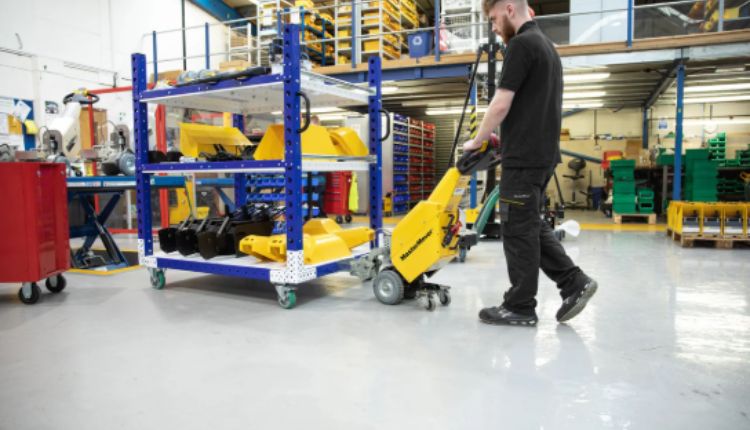In industries where bulk materials must be handled efficiently, there’s a constant need for smarter, more reliable solutions. Industrial workflows that deal with heavy lifting and large volumes can be complex and prone to inefficiency if the right equipment and strategies aren’t in place. That’s where streamlined bulk handling processes come in. By integrating the right tools, techniques, and systems, industrial facilities can boost productivity, reduce costs, and minimize risk.
The Challenge of Bulk Handling in High-Demand Environments
Bulk handling involves the movement, storage, and processing of large quantities of materials, such as raw goods, components, or finished products. Industries like manufacturing, agriculture, mining, and construction rely on efficient bulk handling to ensure that materials flow smoothly through their production processes. However, the sheer volume of material that must be managed in high-demand environments can make the task challenging.
Managing bulk materials efficiently requires precision and specialized equipment to handle the weight and volume involved. When operations rely on outdated or manual systems, they risk costly delays, safety hazards, and reduced output. To stay competitive, industries must find ways to improve bulk material handling without sacrificing safety or operational integrity.
Key Components of Streamlined Bulk Handling
When setting up an efficient bulk handling system, it’s essential to understand the different components involved. This includes the machinery, processes, and technologies that facilitate the transport and storage of materials. Let’s break down the key elements that play a critical role in making bulk handling efficient:
- Automated Material Handling Systems: The heart of streamlined bulk handling lies in automation. Conveyor belts, automated sorting systems, and robotic arms are used to move materials without human intervention. These systems reduce the risk of errors, cut down on labor costs, and improve speed.
- Self-Dumping Hoppers: Adding self-dumping hoppers to your workflow can significantly reduce the time it takes to unload and move bulk materials. These hoppers are designed to automatically release their contents, ensuring a faster and safer unloading process. With the right self-dumping hopper system in place, facilities can manage bulk material flow without having to stop the workflow for manual dumping, making operations more continuous and efficient.
- Specialized Lifting Equipment: From forklifts and cranes to hoists and lifting magnets, specialized lifting equipment is a must for handling heavy loads in industrial settings. These devices can lift and move materials safely while minimizing the risk of injury or damage. Incorporating advanced lifting solutions can increase the overall efficiency of bulk handling processes
- Efficient Storage Solutions: Bulk materials need to be stored properly to minimize waste, improve safety, and facilitate easier handling. Solutions like silos, bulk bins, and automated storage systems ensure that materials are organized and easy to access, improving the flow of the entire system.
- Data-Driven Insights: In today’s world, data is king. Implementing tracking and monitoring systems that collect real-time data on inventory levels, material movement, and equipment usage can help facilities make informed decisions. These insights can lead to better forecasting, optimized workflows, and proactive maintenance.
The Role of Smart Technology in Bulk Handling
Technology has revolutionized industrial workflows, and bulk handling is no exception. Smart technologies such as the Internet of Things (IoT), artificial intelligence (AI), and machine learning are becoming increasingly integrated into industrial settings. These technologies enable better management and predictive analysis, ensuring that bulk handling systems are running at peak efficiency.
- IoT Sensors: IoT sensors can be installed on equipment to collect real-time data on performance, material levels, and environmental conditions. This allows for immediate adjustments when necessary, minimizing downtime and ensuring smooth operations.
- AI for Predictive Maintenance: Machine learning and AI can predict when equipment is likely to fail, allowing businesses to perform maintenance before a breakdown occurs. This predictive approach extends the lifespan of machinery and reduces repair costs.
- Robotics and Automation: Robotics and automated systems allow for quicker, more precise handling of materials. For example, automated cranes can unload bulk materials faster and with greater accuracy, reducing the time spent on manual tasks.
Improving Safety in Bulk Handling Workflows
Safety is paramount when dealing with heavy lifting and bulk materials. Bulk handling often involves hazardous materials, heavy machinery, and high-risk environments. To ensure a safe and efficient workflow, it’s essential to implement best practices for safety:
- Training and Safety Protocols: Proper training and the establishment of clear safety protocols are crucial. Workers must be trained in the use of heavy machinery and understand the risks associated with handling bulk materials. Ongoing safety education and drills can help minimize accidents.
- Ergonomics and Safe Design: Equipment and workflow design should prioritize ergonomics to reduce strain on workers. For example, adjustable height platforms, ergonomic lifting devices, and improved operator visibility can help prevent injuries.
- Preventative Maintenance: Regularly maintaining and inspecting equipment can catch issues before they become hazardous. Implementing a predictive maintenance schedule ensures that machines are operating safely and efficiently, reducing the chance of mechanical failures that could lead to accidents.
- Material Handling Safety Standards: Many industries are governed by material handling safety standards, such as those outlined by OSHA. Compliance with these regulations ensures that safety measures are up to code and that equipment is safe for use in industrial environments.
Cost Savings Through Streamlined Bulk Handling
While the upfront investment in modern bulk handling equipment can be significant, the long-term savings can be substantial. By optimizing workflows and improving efficiency, companies can lower their overall operational costs. This includes reducing labor costs, cutting down on downtime, minimizing waste, and avoiding costly errors.
For example, automated systems and self-dumping hoppers reduce the need for manual labor, freeing up workers to focus on higher-value tasks. Additionally, real-time monitoring can identify bottlenecks and inefficiencies in the system, allowing for quick adjustments that prevent slowdowns and lost production time.
Moreover, streamlined bulk handling reduces the chances of costly material losses. Accurate monitoring and efficient handling systems prevent spillage, breakage, or waste, ensuring that resources are utilized to their fullest potential.
For further insights on optimizing industrial operations, check out the Association for Advancing Automation.
Conclusion: Future-Proofing Bulk Handling
As industries continue to face the pressures of high-demand workflows, the importance of streamlined bulk handling cannot be overstated. With automation, smart technology, specialized lifting equipment, and efficient storage solutions, businesses can significantly improve their material handling processes. By focusing on safety, cost-effectiveness, and data-driven insights, companies can ensure that they stay competitive and meet the demands of their industries.
For those looking to further optimize their bulk handling systems, it’s essential to keep innovating. Adding self-dumping hoppers to your workflow, integrating cutting-edge technology, and constantly evaluating your processes can all help pave the way for a more efficient and productive future.






